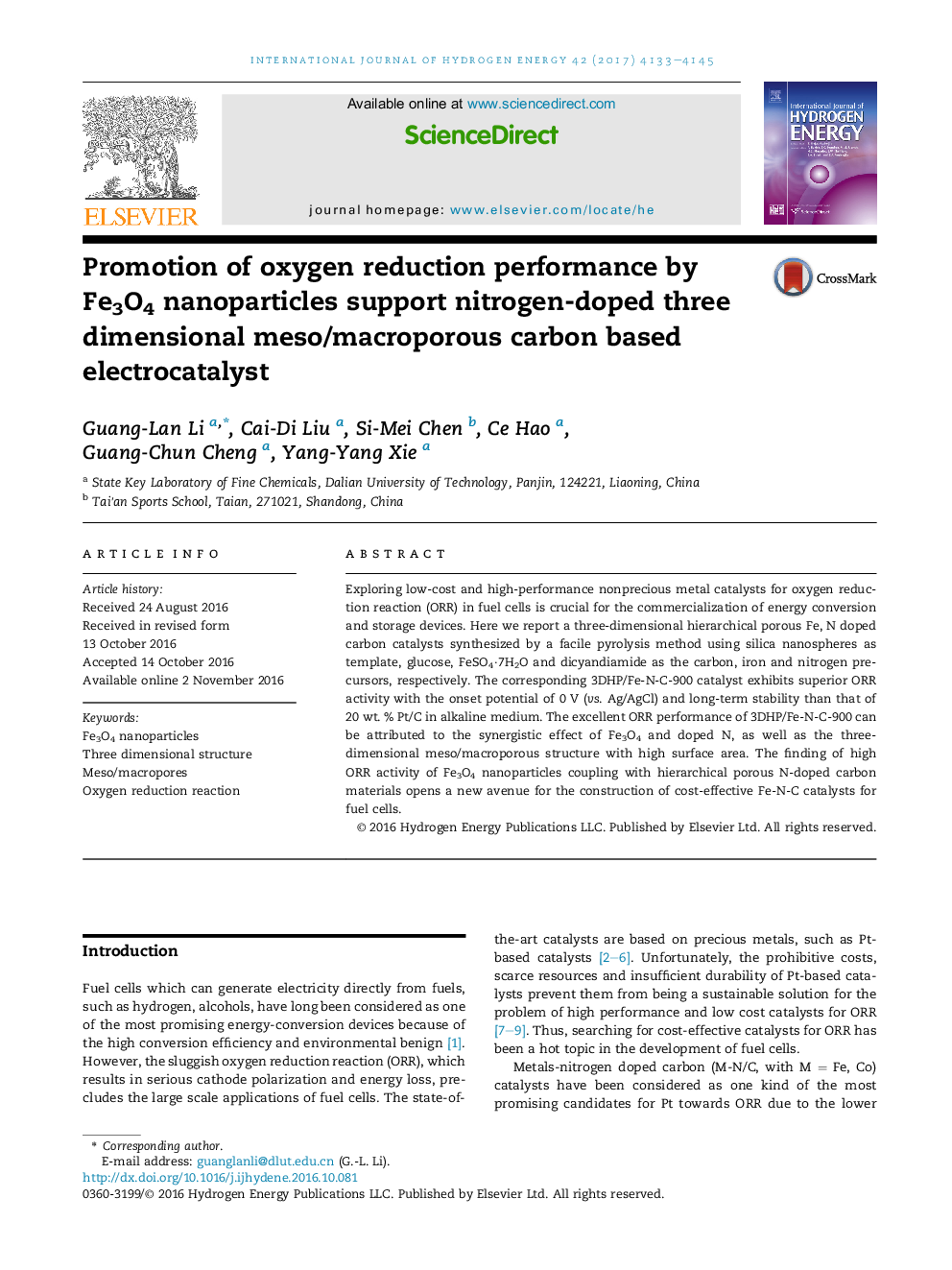| Article ID | Journal | Published Year | Pages | File Type |
|---|---|---|---|---|
| 5146331 | International Journal of Hydrogen Energy | 2017 | 13 Pages |
â¢The 3DHP/Fe-N-C-900 catalyst possesses high specific surface area.â¢The iron species only forms Fe3O4 rather than FeNx in 3DHP/Fe-N-C-900.â¢The 3DHP/Fe-N-C-900 catalyst exhibits excellent catalytic activity for ORR.â¢The 3DHP/Fe-N-C-900 catalyst displays superior long-term stability.â¢Such high ORR performance mainly results from the synergistic effect of Fe3O4 nanoparticles and doped N.
Exploring low-cost and high-performance nonprecious metal catalysts for oxygen reduction reaction (ORR) in fuel cells is crucial for the commercialization of energy conversion and storage devices. Here we report a three-dimensional hierarchical porous Fe, N doped carbon catalysts synthesized by a facile pyrolysis method using silica nanospheres as template, glucose, FeSO4·7H2O and dicyandiamide as the carbon, iron and nitrogen precursors, respectively. The corresponding 3DHP/Fe-N-C-900 catalyst exhibits superior ORR activity with the onset potential of 0 V (vs. Ag/AgCl) and long-term stability than that of 20 wt. % Pt/C in alkaline medium. The excellent ORR performance of 3DHP/Fe-N-C-900 can be attributed to the synergistic effect of Fe3O4 and doped N, as well as the three-dimensional meso/macroporous structure with high surface area. The finding of high ORR activity of Fe3O4 nanoparticles coupling with hierarchical porous N-doped carbon materials opens a new avenue for the construction of cost-effective Fe-N-C catalysts for fuel cells.
Graphical abstractDownload high-res image (316KB)Download full-size image
